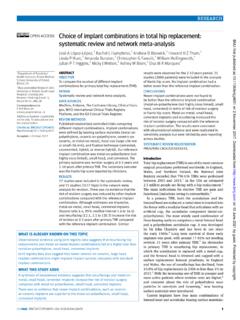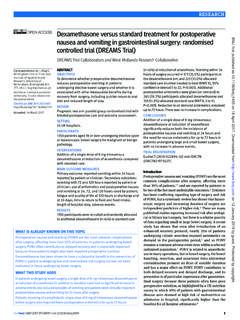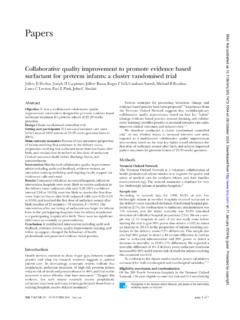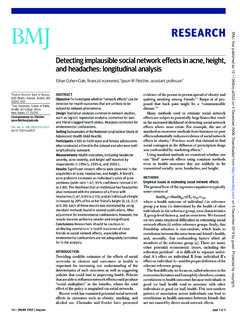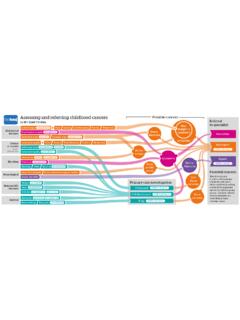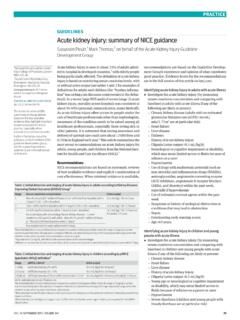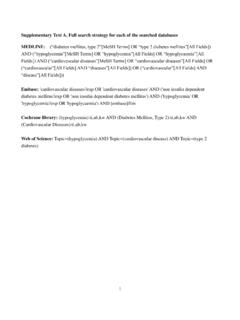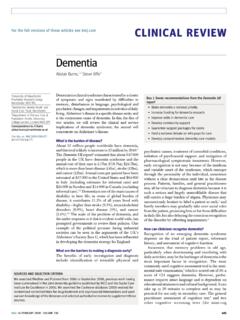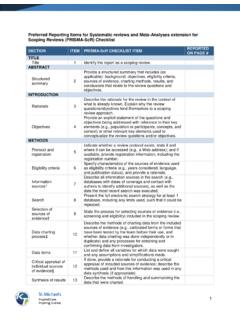Transcription of The PRISMA 2020 statement: an updated guideline for ...
1 RESEARCH METHODS AND REPORTINGthe bmj | BMJ 2021;372:n71 | doi: 1 The PRISMA 2020 statement: an updated guideline for reporting systematic reviewsMatthew J Page,1 Joanne E McKenzie,1 Patrick M Bossuyt,2 Isabelle Boutron,3 Tammy C Hoffmann,4 Cynthia D Mulrow,5 Larissa Shamseer,6 Jennifer M Tetzlaff,7 Elie A Akl,8 Sue E Brennan,1 Roger Chou,9 Julie Glanville,10 Jeremy M Grimshaw,11 Asbj rn Hr bjartsson,12 Manoj M Lalu,13 Tianjing Li,14 Elizabeth W Loder,15 Evan Mayo-Wilson,16 Steve McDonald,1 Luke A McGuinness,17 Lesley A Stewart,18 James Thomas,19 Andrea C Tricco,20 Vivian A Welch,21 Penny Whiting.
2 17 David Moher22 The Preferred Reporting Items for Systematic reviews and Meta- analyses ( PRISMA ) statement, published in 2009, was designed to help systematic reviewers transparently report why the review was done, what the authors did, and what they found. Over the past decade, advances in systematic review methodology and terminology have necessitated an update to the guideline . The PRISMA 2020 statement replaces the 2009 statement and includes new reporting guidance that reflects advances in methods to identify, select, appraise, and synthesise studies. The structure and presentation of the items have been modified to facilitate implementation.
3 In this article, we present the PRISMA 2020 27-item checklist, an expanded checklist that details reporting recommendations for each item, the PRISMA 2020 abstract checklist, and the revised flow diagrams for original and updated reviews serve many critical roles. They can provide syntheses of the state of knowledge in a field, from which future research priorities can be identified; they can address questions that otherwise could not be answered by individual studies; they can identify problems in primary research that should be rectified in future studies; and they can generate or evaluate theories about how or why phenomena occur.
4 Systematic reviews therefore generate various types of knowledge for different users of reviews (such as patients, healthcare providers, researchers, and policy makers).1 2 To ensure a systematic review is valuable to users, authors should prepare a transparent, complete, and accurate account of why the review was done, what they did (such as how studies were identified and selected) and what they found (such as characteristics of contributing studies and results of meta- analyses ). Up-to-date reporting guidance facilitates authors achieving Preferred Reporting Items for Systematic reviews and Meta- analyses ( PRISMA ) statement published in 2009 (hereafter referred to as PRISMA 2009)
5 4-10 is a reporting guideline designed to address poor reporting of systematic The PRISMA 2009 statement comprised a checklist of 27 items recommended for reporting in systematic reviews and an explanation and elaboration paper12-16 providing additional reporting guidance for each item, along with exemplars of reporting. The recommendations have been widely endorsed and adopted, as evidenced by its co-publication in multiple journals, citation in over 60 000 reports (Scopus, August 2020), endorsement from almost 200 journals and systematic review organisations, and adoption in various disciplines.
6 Evidence from observational studies suggests that use of the PRISMA 2009 statement is associated with more complete reporting of systematic reviews,17-20 although more could be done to improve adherence to the innovations in the conduct of systematic reviews have occurred since publication of the PRISMA 2009 statement. For example, technological advances have enabled the use of natural language processing and machine learning to identify relevant evidence,22-24 methods have been proposed to For numbered affiliations see end of the to: M J Page 0000-0002-4242-7526)Additional material is published online only.
7 To view please visit the journal this as: BMJ 2021;372:n71 : 4 January 2021 SUMMARY POINTSTo ensure a systematic review is valuable to users, authors should prepare a transparent, complete, and accurate account of why the review was done, what they did, and what they foundThe PRISMA 2020 statement provides updated reporting guidance for systematic reviews that reflects advances in methods to identify, select, appraise, and synthesise studiesThe PRISMA 2020 statement consists of a 27-item checklist, an expanded checklist that details reporting recommendations for each item, the PRISMA 2020 abstract checklist.
8 And revised flow diagrams for original and updated reviewsWe anticipate that the PRISMA 2020 statement will benefit authors, editors, and peer reviewers of systematic reviews, and different users of reviews, including guideline developers, policy makers, healthcare providers, patients, and other stakeholders on 9 May 2022 by guest. Protected by : first published as on 29 March 2021. Downloaded from RESEARCH METHODS AND REPORTING2 doi: | BMJ 2021;372:n71 | the bmjsynthesise and present findings when meta-analysis is not possible or appropriate,25-27 and new methods have been developed to assess the risk of bias in results of included 29 Evidence on sources of bias in systematic reviews has accrued, culminating in the development of new tools to appraise the conduct of systematic 31 Terminology used to describe particular review processes has also evolved, as in the shift from assessing quality to assessing certainty in the body of In addition.
9 The publishing landscape has transformed, with multiple avenues now available for registering and disseminating systematic review protocols,33 34 disseminating reports of systematic reviews, and sharing data and materials, such as preprint servers and publicly accessible repositories. To capture these advances in the reporting of systematic reviews necessitated an update to the PRISMA 2009 of PRISMA 2020A complete description of the methods used to develop PRISMA 2020 is available We identified PRISMA 2009 items that were often reported incompletely by examining the results of studies investigating the transparency of reporting of published 21 36 37 We identified possible modifications to the PRISMA 2009 statement by reviewing 60 documents providing reporting guidance for
10 Systematic reviews (including reporting guidelines, handbooks, tools, and meta-research studies).38 These reviews of the literature were used to inform the content of a survey with suggested possible modifications to the 27 items in PRISMA 2009 and possible additional items. Respondents were asked whether they believed we should keep each PRISMA 2009 item as is, modify it, or remove it, and whether we should add each additional item. Systematic review methodologists and journal editors were invited to complete the online survey (110 of 220 invited responded).


